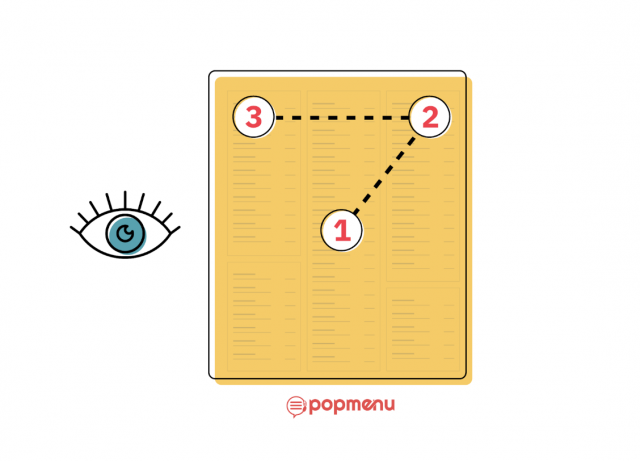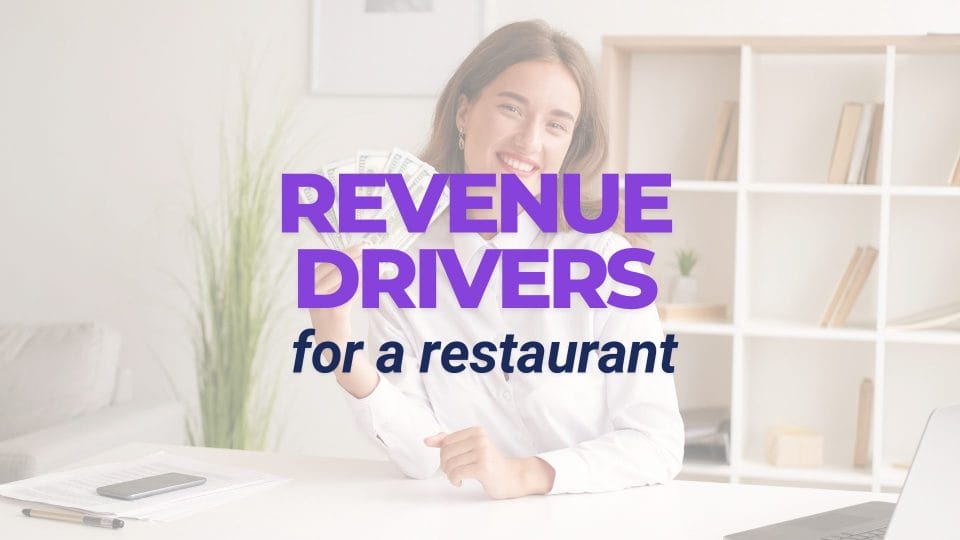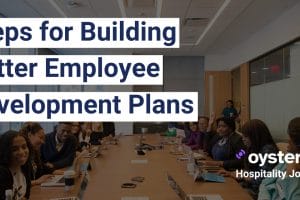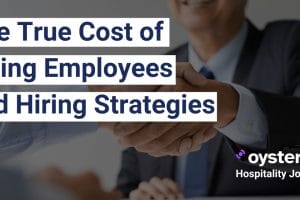Restaurant revenue drivers play a significant role in achieving success in 2025. Smart menu engineering and loyalty programs can boost your bottom line through the right strategy combination.
The data reveals impressive results – a one-star increase in Yelp rating leads to a 5-9% increase in revenue. Here are 7 proven methods that will help your restaurant succeed in this competitive market.
Smart Menu Engineering
Menu engineering helps maximize your restaurant’s profitability through analytical insights. Studies show that a well-designed menu can increase sales by up to 30% with strategic visual elements.
Menu psychology and pricing
The “Golden Triangle” concept shapes successful menu design. Your customers’ eyes naturally move to the center first, then the top right corner and finally the top left corner. You can boost visibility and sales by placing your most profitable items in these areas.

Price strategy is a vital part of menu psychology. Research shows that removing currency signs and using whole numbers instead of decimals leads to higher spending. On top of that, it helps to use “bracketing” with portion options to create better value perception, especially when you have a smaller portion at a lower price point.
High-margin menu items
Beverages lead the list of profitable items with an average gross profit margin of 85%. Simple sides like steamed rice and French fries bring substantial returns due to their low production costs.
You can increase selection rates by placing these high-margin items within your menu’s golden triangle. So highlighting one or two items per section with visual cues like boxes or borders can boost their sales by up to 30%.
Seasonal menu optimization
Seasonal menus cut labor costs while improving flavor profiles. Industry data shows that batch-cooked comfort foods like soups and stews during winter months reduce labor needs during peak service hours.
Locally grown seasonal items give you better buying power and improved taste. Seasonal menu changes are a great way to get marketing opportunities to reach both current customers and new prospects.
Digital menu innovation
Digital menus boost delivery volume by 15% through high-quality photos. Restaurants using digital displays can improve customer satisfaction by 25%.
Digital menus work best with interactive elements and up-to-the-minute data analysis. They let you make quick price adjustments and instantly remove out-of-stock items. This streamlines the ordering process and improves operational efficiency.
Data-Driven Table Management
“The brands that thrive will use guest data to deliver personalized experiences and make smarter business decisions. This goes beyond marketing — from menu optimization to real estate strategy, data will separate winners from losers in an increasingly competitive landscape.”
Restaurants need precise table management to maximize their revenue. The average table turnover rate in the restaurant industry ranges from two to three times during nightly service.
Table turnover analytics
Your table turnover rate helps you optimize seating efficiency and boost profits. The calculation is simple – divide the total number of tables served by the number of physical tables in your dining room. Modern POS systems track these analytics and show ways to speed up service and make customers happier.
Restaurants that use analytics can predict customer patterns better and adjust their operations. These insights help them avoid common problems like table bottlenecks and long wait times.
Peak hour optimization
Good preparation before rush hours makes service run smoothly. POS systems analyze sales trends to predict peak periods, which leads to better staff scheduling and inventory management.
Restaurant Managers use past data to spot high-traffic periods and get ready. The team preps ingredients, cleans workspaces and learns about menu specials before the rush begins.
Reservation system efficiency
New reservation systems come with powerful features that make operations run smoothly. These platforms let staff text guests to reduce no-shows and work with Google to get more bookings.
Old-school methods still work, but digital systems are better at tracking everything. They connect to CRM databases and show valuable customer data like visit frequency and spending patterns. The systems also blend with over 20 POS platforms, which creates uninterrupted operations that make both staff and guests happy.
Digital Ordering Channels
The booming online food delivery market skyrocketed to $569.1 billion in 2023 and is on track for unstoppable growth, expanding at a steady 4.3% annually through 2028.
Mobile app integration
Restaurant mobile apps generate 35% of online orders. These apps let customers order directly while connecting loyalty programs and individual-specific marketing messages.
Mobile apps use machine learning to suggest items that boost average order values. The built-in payment systems support everything from cards to mobile wallets. This makes customer transactions quick and easy.
QR code ordering
QR codes have proven successful, with 20% of diners appreciating their hygiene benefits. All the same, restaurants must balance state-of-the-art solutions with customer priorities since 89% of casual diners still want physical menus.
QR codes let restaurants update their menus instantly to adjust prices and item availability. This helps restaurants manage their offerings better while cutting printing costs and menu update times.
Voice ordering solutions
Voice ordering systems boast a 99.8% accuracy rate for orders and payments. These systems handle multiple calls at once, so customers don’t wait during rush hours.
The core team can work hands-free and multitask with this technology. Restaurants can streamline their operations and reduce order mistakes at the same time.
Social media ordering
Social media ordering platforms have changed how customers interact with restaurants. “Order Food” buttons and in-story stickers turn social media activity into sales.
Restaurants that use social media ordering see bigger order values and more frequent orders. These platforms build brand loyalty through direct customer interaction and individual-specific marketing.
Customer Experience Enhancement
89% of diners choose restaurants based on their overall experience, which leads to major revenue growth.
Personalized service
Guest data collection and analysis are the foundations of personalized service. Research shows customers spend 18% more when they receive personal attention.
Restaurants that use loyalty programs and POS systems can track their customers’ priorities, from favorite tables to dietary restrictions. Servers can use this information to make tailored recommendations and give special attention, which leads to higher satisfaction rates.
Ambiance optimization
The right atmosphere shapes dining behavior, and 72% of customers look for experiential dining options. Music selection and proper lighting shape both food perception and dining duration.
81% of Americans avoid restaurants with poor hygiene reviews. Quality checks and regular maintenance ensure a clean dining environment throughout service hours.
Wait time management
Customer satisfaction drops by 18% due to long wait times. Most fast-food places keep wait times under 5 minutes, while casual dining spots average 20 minutes.
Smart restaurants use several methods to handle wait times better. They keep customers happy by serving free drinks or appetizers during delays. Table management systems help seat guests faster and cut down waiting time.
Source: Statista
Online Reputation Management
“A one-star increase in Yelp rating leads to a 5-9% increase in revenue”
— Michael Luca, Associate Professor of Business Administration at Harvard Business School
Online reviews play a huge role in customer decisions. 94% of diners pick restaurants based on what others say online. Customers don’t mind paying 15% more if they know they’ll get better service.
Review response strategy
Quick responses to reviews within 1-2 days show you care and build customer trust. Restaurants that respond to social media comments see a 25% increase in customer satisfaction.
Thank customers by name for positive reviews and mention specific things they liked. This personal touch motivates more customers to share their experiences. Negative feedback needs a professional response. Take these discussions offline to fix any problems.
Social media presence
Post at least three times every week to keep your followers interested. Your content should have great food photos, kitchen scenes and staff stories.
Talk to your followers through comments and messages to build trust in your community. The numbers speak for themselves – 70% of customers try restaurants they see on social media. Sharing customer posts with proper credit builds trust and feels authentic to new customers.
Brand reputation monitoring
Reputation management software helps you track what people say about you on platforms of all types. These tools give you live feedback and help you make your service better.
Google Alerts and social media tracking tools help you watch your brand mentions. This helps you spot trends early and fix problems before they grow bigger. Restaurant owners who keep an eye on their online presence get happier customers who come back more often.
Loyalty Program Innovation
Loyalty programs are proven revenue generators. Research shows that a 5% increase in customer loyalty can lead to revenue growth between 25% and 95%.
Points system design
Points-based systems lead the way in restaurant loyalty strategies and give customers clear reward paths. Members earn points tied to their spending, with a typical rate of one point for each dollar spent.
The most effective programs go beyond simple discounts. Restaurants see better results when they let customers choose between free menu items, special perks and percentage-based discounts.
Tier-based rewards
Tiered loyalty programs deliver 1.8x higher ROI than standard programs. These programs typically have three levels: simple, mid-tier and premium. Each tier comes with better benefits than the last.
The best tier structures keep milestones close together to keep customers interested. Members spend 18% more right after they reach new tiers. These systems can include non-purchase activities to help members advance, unlike traditional programs.
Digital loyalty integration
Modern loyalty platforms merge with POS systems to track rewards immediately. These systems help businesses learn about customer habits, from what they order to how often they visit.
Digital loyalty programs sometimes add game-like elements that make progress tracking fun. This strategy works well – Starbucks Rewards has grown to 30.4 million members in the US. Chipotle’s loyalty members make up 25% of their total customer base.
Staff Training and Retention
Good staff management directly affects your profits. Restaurants see 75% lower turnover rates with detailed training programs.
Performance incentives
Money rewards are vital for keeping staff, since almost half of restaurant workers earn between USD 11.00-15.00 per hour. Performance-based bonuses can boost staff involvement by 17% and cut down safety incidents by 70%.
The best reward programs combine recognition systems with team rewards. An “Employee of the Month” program with real rewards creates healthy competition. Team incentives for reaching shared goals help build stronger workplace bonds.
Skills development
Detailed training programs are the life-blood of restaurant success. We focused on food safety rules, customer service skills and ways to optimize operations to build a professional team.
Career growth opportunities make a big difference in retention. 24% of workers leave their jobs because they can’t grow. Workshops, certifications and cross-training programs are a great way to get skilled, loyal teams while spending less on hiring.
Employee satisfaction metrics
Tracking and improving employee satisfaction is key to reducing costly turnover. Staff feedback through surveys and one-on-one meetings highlights areas needing improvement, while employee involvement software helps measure satisfaction levels more effectively.
Open communication with leadership also plays a crucial role in morale. Weekly review sessions with management ensure that all team members have a voice, and tracking key metrics like Employee Retention Rate (ERR) provides insight into the success of retention strategies.
According to Sarah Diehl, founder of Empowered Hospitality and a leader in workplace culture transformation, turnover costs add up fast:

“Turnover can be anywhere from $5,000 to $10,000 for any hourly employee.
With a 70% annual turnover — an industry average — that’s substantial. If 70 employees leave at $5,000 each, the cost quickly adds up.
Just demonstrating the math, honestly, is sometimes all that’s needed to really convince an employer that it makes sense to invest in paying a little bit better, retaining employees, offering benefits and doing some of the things that will keep employees around for longer.”
Conclusion
Running a successful restaurant in 2025 isn’t just about serving great food—it’s about strategic innovation. From smart menu engineering to data-driven table management and digital ordering channels, every aspect of your restaurant must be optimized to drive revenue. Loyalty programs, customer experience enhancements and strong online reputation management are no longer optional—they’re necessary for survival in an ultra-competitive industry.
Top 7 Revenue Drivers for Restaurants FAQ
The quickest way to boost revenue without major costs is menu optimization. This means:
- Highlighting high-margin items in the “Golden Triangle” of your menu (center, top-right, top-left).
- Removing currency signs to encourage higher spending.
- Using smaller portion bracketing—offering different sizes at strategic price points.
- Upselling profitable add-ons like drinks and sides that cost little but bring in big profits.
Absolutely! A one-star increase in Yelp rating leads to a 5-9% revenue increase. Diners trust reviews more than advertising, and 94% of people choose restaurants based on them.
- Pre-bussing—clearing empty plates quickly signals the meal is wrapping up.
- Table-ready notifications—use a POS system to optimize seating and reduce wait times.
- Prepping staff before peak hours so service is smooth and efficient.
- Offering mobile/QR ordering—this shaves off 5-10 minutes from ordering time.
Yes! A 5% increase in customer loyalty can lead to a 25-95% revenue boost.
Yes! The global online food delivery market hit $569.1 billion in 2023 and is expected to grow at a steady 4.3% annually until 2028. This means more customers are shifting to digital ordering, making it a must-have for any restaurant looking to stay competitive.

Written by Lidija Misic
Lidija holds a BA in English Language and has lived in five different countries, where she has worked in various roles, including as a flight attendant, teacher, writer and recruiter. Her biggest passion is crafting great content and reading. She is particularly passionate about creating punchy copy that inspires people to make positive changes in their lives.

Reviewed by Marcy Miniano
Marcy is an editor and writer with a background in public relations and brand marketing. Throughout her nearly decade-long career, she has honed her skills in crafting content and helping build brands across various industries — including restaurant and hospitality, travel, tech, fashion and entertainment.




